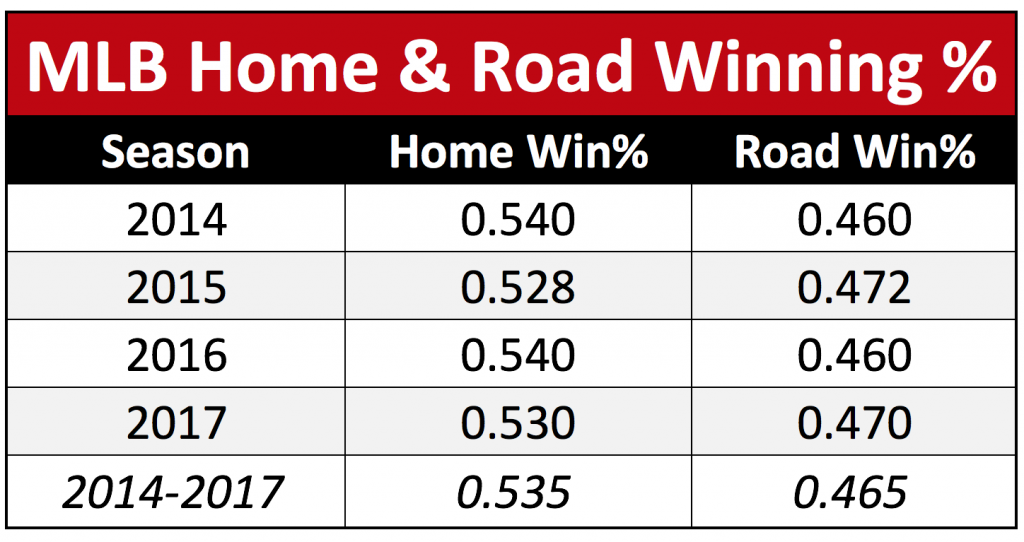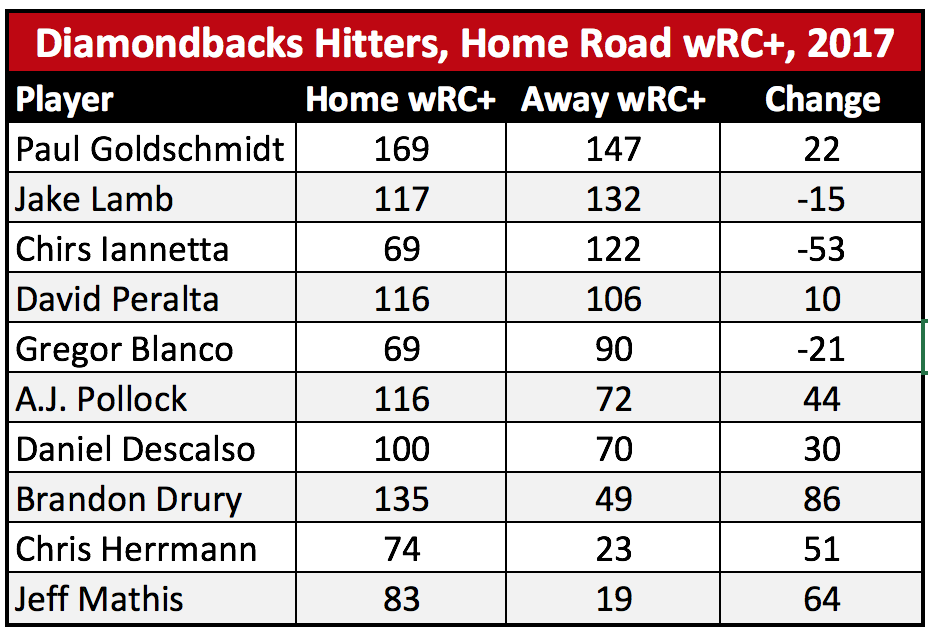There’s No Place Like Home For the D-backs
Impressions of Chase Field vary depending on who you talk to. It’s a relatively new stadium, and with that newness comes a lack of charm. It will never be Wrigley Field or Fenway. Maybe it doesn’t sparkle like PNC Park and PetCo Park do. It’s been described by some as “an empty airplane hangar.” When the temps aren’t skin-melting, the roof and the panels are open and it feels plenty modern and homey, at least to me. I’ve enjoyed enough game at Chase to know that when the roof is closed and the crowd stays home, it can also feel a little stagnant. The team and the county, and even Major League Baseball, continue to negotiate about who should be in charge of upgrading the joint. That’s a sticky issue full of moral dilemmas, but no one wants the team to leave. Based upon some recent results, you can easily see why.
The Diamondbacks still control their own destiny with just six weeks of baseball to play. They’re the leading contender for a National League wild card spot as they’ve played themselves into an enviable position. August is rolling on, and though the brutal month has not been especially kind to them, it’s not as if they’re hemorrhaging ground to the competition. The Cardinals have made up some distance, but the Rockies haven’t in a meaningful way. Playing just .500 baseball may still get them in, though you’d expect a better showing than that. Things are close enough for concern, however, especially when one considers that, entering Tuesday’s matinee, they have 20 home games remaining and 24 away games left on the schedule. The fact that they’re playing more away than home games down the stretch is a bit troubling when you acknowledge just how poorly the team has preformed away from Chase Field.
Overall, the team is 66-52 (.559), good for 14-games above .500. At home, the team is 39-22 (.639). On the road, the team is 27-30 (.474). It’s not as if being 3-games under .500 on the road is a massive issue. Playing .500 ball on the road should be just fine if you’re able to take care of your advantage at home. They’ve done that, but they’ve ceded some ground away from Chase. For a historic perspective, have a look at the home/road winning percentages by season across baseball. Keep in mind, 2017 is far from over.
The Diamondbacks’ mark of .639 at home is far above average for any season in recent memory. Their .474 mark on the road is also better than average, though by a much smaller margin. They’ve won about 10% more games at home this season than average, but just less than 1% more on the road. That makes for a very good team at Chase Field and a very average team away from it. If home and road games were our only consideration and we expected the current rates to hold, this would put the D-backs on pace for 90 wins, which is awfully close to the 89 wins projected by FanGraphs and it would likely be enough to get into the playoffs. Of course, home/road games aren’t the only consideration, but it’s something to look out for.
As to why the team has struggled on the road, at least compared to their relative success at home, that’s worth investigating. We know that pitching at Chase Field can be awfully difficult. Have a peek at the team’s home/road splits in the pitching department.
Notice anything strange? Yeah, neither did I. Aside from the Chase Field effect of more home runs, which FIP accounts for, the process stats are similar. Strikeouts stay close as do walks. The performance of opposing hitters is nearly identical. It’s not like there’s some huge issue here with the pitching staff away from Chase Field. They’ve been the same, home or road, once you account for the quirks of pitching half of your games (or, actually just over half of your games) in Arizona.
The same cannot be said for the team’s position players. Take a look at a very similar breakdown below:
While the strikeout and walk rates don’t vary too wildly (though they’re both in favor of the home splits), the rest is way off the pace. The team averages 1.4 home runs and 2.4 doubles per home game. On the road, they average 1.1 home runs and 1.6 doubles. As we’ve long discussed, Chase Field does aid home runs, but it aids doubles and triples even more so given the spacious outfield dimensions. Even then, the production away from Arizona falls further than you’d expect. The team hasn’t been as fortunate on balls in play and the drop in extra-base hits reduces their Isolated Power figures. Even on the bases, they’ve been less productive in terms of stealing bags (thanks in part to fewer opportunities with fewer balls dropping for hits). There’s a Chase Field component at play here, without a doubt. But does it account for the team being merely average on the road?
The answer is no. Weighted Runs Created Plus (wRC+) controls for ballparks, making it handy in a situation like this. I’ve long felt that the park factors baked into wRC+ over-penalize the Diamondbacks as it does strip away a lot of their production — more than I think is fair — and give the credit to the ballpark. But even with those measures built in, the team has a wRC+ of 105 (5% better offense than league average) at home and wRC+ of 81 on the road (19% worse than league average). Even if you want to blame Chase Field’s environment for the disparity, you simply can’t. They’ve played like the Yankees at home and the Giants on the road. They’ve averaged over 5.5 runs per game at Chase and barely 4 runs per game away from their home park. That’s an issue.
Here’s how it shakes out on a per-player basis for guys with at least 50 plate appearances at home and on the road (Ketel Marte just misses the cut).
Chris Iannetta, Jake Lamb and Gregor Blanco have hit better on the road. Everyone else has performed worse. Some cases are minor (David Peralta), others are drastic (Brandon Drury, A.J. Pollock, Jeff Mathis, etc.). It’s not wonder run production is down on the road — the guys just aren’t playing the same, even when you account for the change in venue.
The D-backs have more road games than home games remaining. As a wild card team, if they can survive a play-in game, they’ll face more road tests than home tests. With 118 games played, there’s a major discrepancy in terms of the hitters’ production at Chase Field and away from it. The pitching staff has performed well outside of their home park, but the offensive woes have swamped any gains outside of Arizona. It’s no wonder the team has looked simply average in their away games. In fact, it’s almost a miracle they’ve done as well as they have when you look at how big the gap is in terms of runs scored. The pitching staff has kept them afloat on the road, but how well that trend holds up may just account for how long the team is able to hold their advantage in the standings.
One Response to There’s No Place Like Home For the D-backs
Leave a Reply Cancel reply
Recent Posts
@ryanpmorrison
 Congrats to @OutfieldGrass24 on a beautiful life, wedding and wife. He deserves all of it (they both do). And I cou… https://t.co/JzJtQ7TgdJ, Jul 23
Congrats to @OutfieldGrass24 on a beautiful life, wedding and wife. He deserves all of it (they both do). And I cou… https://t.co/JzJtQ7TgdJ, Jul 23 Best part of Peralta’s 108 mph fliner over the fence, IMHO: that he got that much leverage despite scooping it out… https://t.co/ivBrl76adF, Apr 08
Best part of Peralta’s 108 mph fliner over the fence, IMHO: that he got that much leverage despite scooping it out… https://t.co/ivBrl76adF, Apr 08 RT @OutfieldGrass24: If you're bored of watching Patrick Corbin get dudes out, you can check out my latest for @TheAthleticAZ. https://t.co/k1DymgY7zO, Apr 04
RT @OutfieldGrass24: If you're bored of watching Patrick Corbin get dudes out, you can check out my latest for @TheAthleticAZ. https://t.co/k1DymgY7zO, Apr 04 Of course, they may have overtaken the league lead for outs on the bases just now, also...
But in 2017, Arizona ha… https://t.co/38MBrr2D4b, Apr 04
Of course, they may have overtaken the league lead for outs on the bases just now, also...
But in 2017, Arizona ha… https://t.co/38MBrr2D4b, Apr 04 Prior to the games today, there had only been 5 steals of 3rd this season (and no CS) in the National League. The… https://t.co/gVVL84vPQ5, Apr 04
Prior to the games today, there had only been 5 steals of 3rd this season (and no CS) in the National League. The… https://t.co/gVVL84vPQ5, Apr 04
Powered by: Web Designers@outfieldgrass24
 Old friend alert https://t.co/H8CeVQ90fG, 24 hours ago
Old friend alert https://t.co/H8CeVQ90fG, 24 hours ago RT @kbernot: Drank a lot of exceptional beers this year. Here are my top 10, for @CraftBeerBrew. https://t.co/cSgsipgZdD, Dec 05
RT @kbernot: Drank a lot of exceptional beers this year. Here are my top 10, for @CraftBeerBrew. https://t.co/cSgsipgZdD, Dec 05 Piss off https://t.co/eb6nxEkWJt, Dec 03
Piss off https://t.co/eb6nxEkWJt, Dec 03 Not a moment too soon for a whole host of reasons https://t.co/Y4t76VWAAp, Dec 03
Not a moment too soon for a whole host of reasons https://t.co/Y4t76VWAAp, Dec 03 Congratulations to K.L. and the Hops! There's an emphasis around the organization about being more than just a base… https://t.co/seFcjgViLU, Dec 03
Congratulations to K.L. and the Hops! There's an emphasis around the organization about being more than just a base… https://t.co/seFcjgViLU, Dec 03
Powered by: Web Designers









[…] sniffing around and they’ve got some talent. A 4-5 road trip wasn’t exactly electric, but it was on pace with what Arizona has done all year. The Mets series was particularly close, even if it shouldn’t have been. Two games were […]